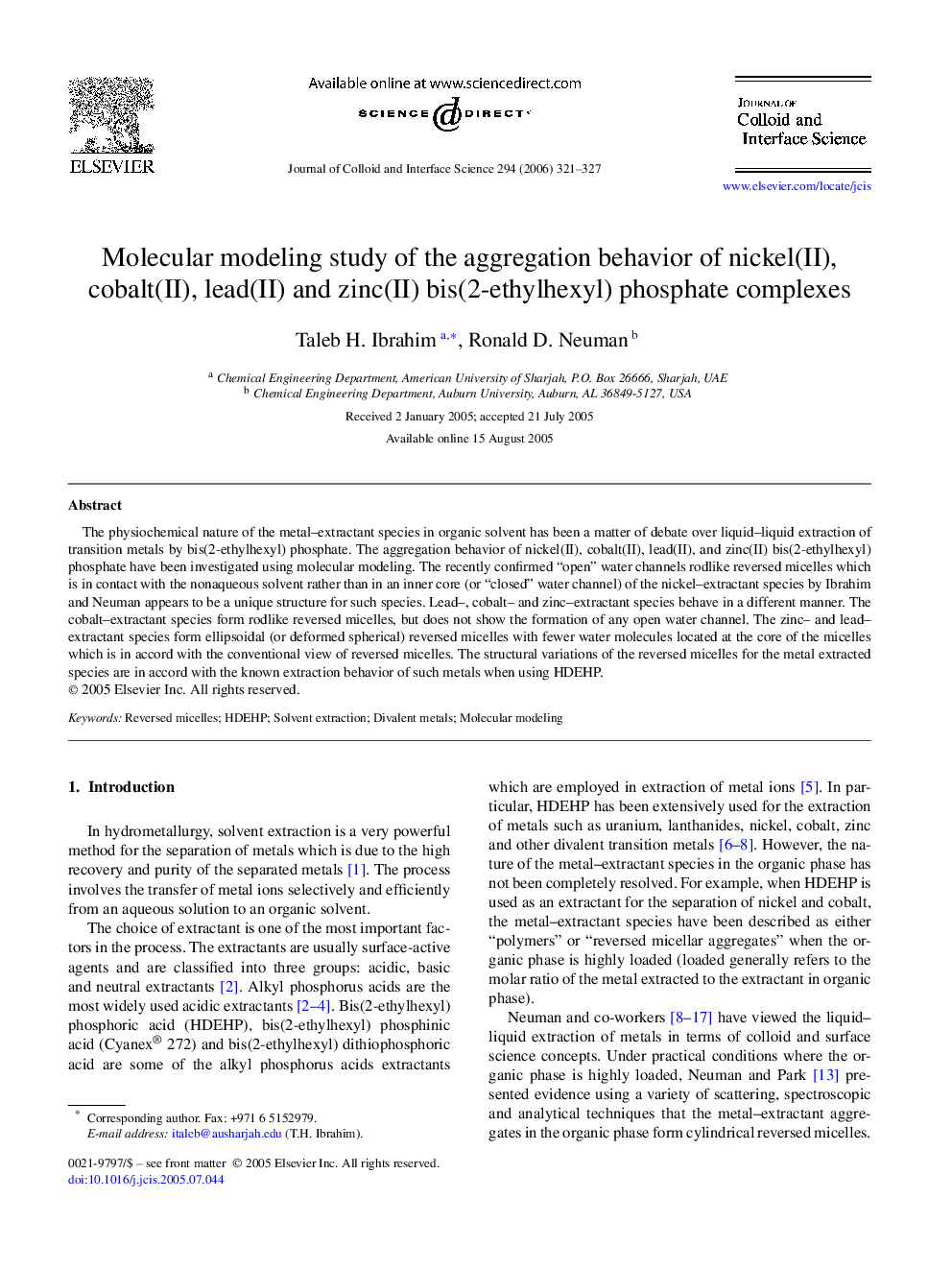| کد مقاله | کد نشریه | سال انتشار | مقاله انگلیسی | نسخه تمام متن |
|---|---|---|---|---|
| 613963 | 880734 | 2006 | 7 صفحه PDF | دانلود رایگان |

The physiochemical nature of the metal–extractant species in organic solvent has been a matter of debate over liquid–liquid extraction of transition metals by bis(2-ethylhexyl) phosphate. The aggregation behavior of nickel(II), cobalt(II), lead(II), and zinc(II) bis(2-ethylhexyl) phosphate have been investigated using molecular modeling. The recently confirmed “open” water channels rodlike reversed micelles which is in contact with the nonaqueous solvent rather than in an inner core (or “closed” water channel) of the nickel–extractant species by Ibrahim and Neuman appears to be a unique structure for such species. Lead–, cobalt– and zinc–extractant species behave in a different manner. The cobalt–extractant species form rodlike reversed micelles, but does not show the formation of any open water channel. The zinc– and lead–extractant species form ellipsoidal (or deformed spherical) reversed micelles with fewer water molecules located at the core of the micelles which is in accord with the conventional view of reversed micelles. The structural variations of the reversed micelles for the metal extracted species are in accord with the known extraction behavior of such metals when using HDEHP.
The “open water-channel” model of Ni(DEHP)2 reversed micelles is a unique structure. Other metal–extractant species form reversed micelles that are in accord with the conventional view of reversed micelles.Figure optionsDownload as PowerPoint slide
Journal: Journal of Colloid and Interface Science - Volume 294, Issue 2, 15 February 2006, Pages 321–327